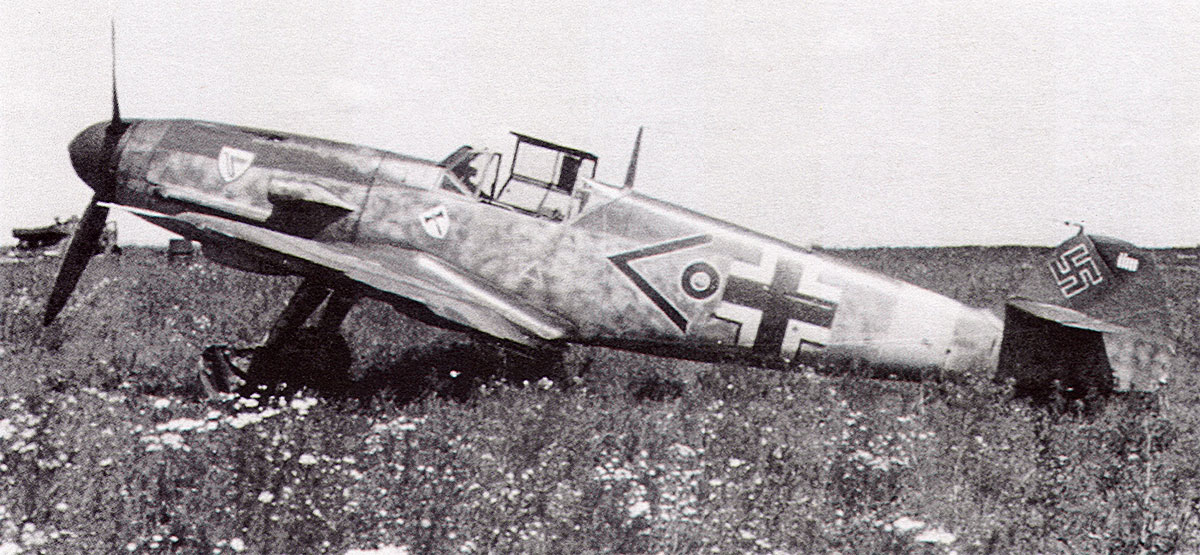

In June 1941 the Luftwaffe was the most capable air force in the world owing to a chain of factors that included deploying the most effective aircraft in almost every category and possessing proficiently trained crews. These two elements turned out to be fundamental, but the outstanding competency of this air force cannot be explained by those factors alone, actually it had deeper roots: it was the result of assimilated experience of its crews and commanders that gave them a thorough understanding of what aspects of air warfare worked and which did not, and the sense to use the equipment at hand for the benefit of the former; a doctrine of operations and related tactics that focused on achievable high-impact goals, fostering proper execution at minimal cost; an effective ground organization that granted the Luftwaffe flexibility to consistently concentrate strong force at critical sectors; skillful and plentiful anti-aircraft units that substantially degraded the efficacy of the opposing air force attacks; and a military-industrial complex that so far had broadly fulfilled the increasing demands of war.
However, profound fissures in the organization had the potential of developing into a major crisis if left uncorrected.
The European war was only 21 months old and the Luftwaffe’s equipment was keeping pace with the additional demands imposed by combat experience. Its aircraft not only had the performance to carry out the missions requested to them, but they were also highly reliable. The teething problems found in the introduction of every new design had been corrected.
Air reconnaissance provides a wealth of tactical and strategic information that is the basis for decision making. Initially, in 1939, the main tactical observation aircraft was the Henschel Hs 126 a single-engine, high-wing monoplane with a crew of two that equipped 80% of the tactical observation staffeln . Other older models made the balance.
The production of this aircraft stopped in 1940 , but existing large stocks were enough to equip 80% of the squadrons earmarked for the Russian front. However, in 1941, the newly introduced Focke Wulf Fw 189, provided with a crew of three, better visibility, space for a large camera and two engines, was rapidly replacing it. Production of the Fw 189 jumped from 38 aircraft in 1940 to 250 in 1941. Twenty percent of the tactical observation squadrons featured this aircraft. It would prove successful in this role until the end of 1942.
The Dornier Do 17 equipped all the strategic observation squadrons during the Battle of Poland but for Barbarossa, it was relegated to night observation in small numbers. The faster and longer-ranged Junkers Ju 88D, a sub-type specifically modified for this role, had replaced it and would perform a sterling job in this capacity.
The Germans devoted roughly 20% of their first-line aircraft to tactical and strategic observation.
In 1939, the Dornier Do 17 and Heinkel He 111 were the main models used by the bomber force but the Junkers Ju 88A, which was present in only one gruppe then, was now the chief medium bomber: almost 60% of the Eastern Front Kampfgruppen were so equipped. At the time, this was the best medium bomber in the world and capable of both horizontal and dive-bombing. It could deliver a heavier tonnage of bombs than its predecessors at similar ranges or it could bomb objectives farther away than the He 111 or the Do 17 (whose production ended in 1940). The He 111 in the meantime, had been upgraded from the P version to the H version and was a very capable aircraft. A third of the Eastern Front Gruppen kept them in their TO&Es. During 1941 the German industry produced 2.146 Ju 88 bombers, 950 He 111, 277 Do 217 and zero Do 17 .
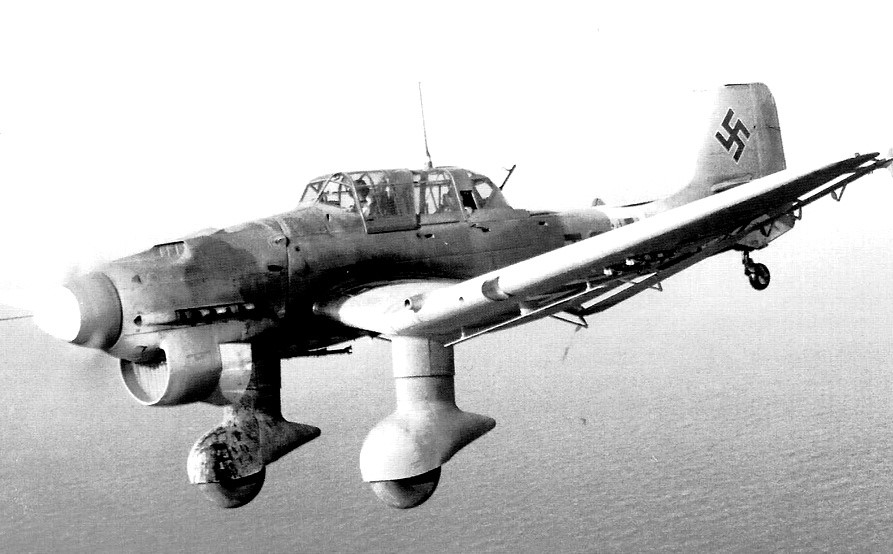
The Junkers Ju 87, nicknamed the Stuka, remained the most accurate bomber in the world by a wide margin on account of its steep-dive bombing capabilities. The B-2 version introduced operationally in the summer of 1940, featured a more powerful engine and heavier bombload capacity. When Barbarossa started this type outnumbered the older B-1 . Its maneuverability allowed it to operate in the battle zone with acceptable losses while the heavier bimotored bombers only operated in this area sparingly.
Nonetheless, the Ju 87 executed most of its missions against targets in the rear, not in the immediate battle zone. Contrary to conventional wisdom, its dominance came from strangulating communication networks preventing the flow of troops and supplies from and to the battle area, and not from operating as “aerial artillery” against defensive positions, a mission executed much less frequently.
British wartime propaganda derided this airplane as obsolete based on a mission flown on 18 August 1940 during the Battle of Britain when they announced to the world that they had destroyed 50% of a force of Ju-87 hitting targets in southern England and called the airplane a “hoax”. The Stuka obsolescence legend stuck with most western historians and endures to this day although it is mistaken. The actual loss rate of the 4 Gruppen involved in the attack was 14% .
The hardest-hit Gruppe did receive a severe battering losing 36% of its aircraft while the other wings underwent light losses. To put this casualty rate in perspective, the RAF Vickers Wellington that attacked the German ships in the Heligoland Bight on 18 December 1939 suffered a 55% casualty rate. During the Battle of France, there were several occasions where bomber formations from both sides suffered similarly . At the time, any attacking day-bomber formation was vulnerable when confronted by a wall of awaiting enemy fighters. This was still the case years later. On 17 August 1943, heavily armed four-engine B-17 bombers suffered a 17% loss rate over Schweinfurt. Some of the participating USAAF bomber groups suffered loss rates of 40% or higher . Therefore, the casualty rate alone does not determine the obsolescence of a bomber.
Any air force will attempt to bomb in tactical conditions that enable the destruction of the target while suffering tolerable losses. Once a tactical situation has been identified as exceedingly unfavorable, the RAF, the Luftwaffe, and the USAAF avoided it if at all possible.
On the other hand, despite its vulnerability in heavily contested airspace, it was an aircraft that could deliver its bombs with precision an order of magnitude better than horizontal bombers attacking from high altitude . Most of the targets of military value were and still are small; the Luftwaffe possessed a weapon capable of delivering punishing damage over short ranges economically. Soviet and Anglo-Saxon air forces did not.

During the same costly attack of 18 August 1940 (16 Stukas destroyed), the dive bombers wrecked 21 British aircraft on the ground, partially destroyed the radar station at Poling, inflicted serious damage on Gosport airfield and virtually destroyed the one at Ford, rendering it out of commission for several weeks. Overall a telling blow. One that is seldom mentioned.
Just weeks before Barbarossa, the Stukas helped conquer the Balkans and delivered a sharp defeat to the Royal Navy in the Mediterranean, making it obvious for the first time in history, that an air force could single-handedly defeat a powerful navy that lacked air support. The Mediterranean Fleet incurred ghastly losses: serious damage on its only aircraft carrier, damage in 3 out of 4 battleships, 3 cruisers sunk and 7 damaged out of 11, and 8 destroyers sunk and 9 damaged out of 32 available. Clearly, these are not the results of an obsolete bomber .
The Ju 87 continued to be a fearsome weapon during operations Barbarossa and Blau (the next year) and the Germans would increase its production until 1943.
The Luftwaffe did not have fighter-bombers in 1939 but experimentation during the Battle of Britain proved that this type of strike aircraft was an ideal tool for very high-precision bombing and strafing attacks at low-level. By June 1941, 134 Messerschmitt Bf 110 and Bf 109E performed this increasingly important role for the attack on Russia.
Taken as a whole 40% of the German air force structure was devoted to bombers.
In the all-important category of fighters, the Luftwaffe had just introduced in abundant numbers the Messerschmitt Bf 109F-2, an interceptor that was superior to the bulk of the VVS’s fighters. 70% of the Jagdgruppen featured this model while only 5 Gruppen still soldiered on with the Bf 109E . The F-2 had a maximum speed of 614 km/hr. (382 mph) and the only aircraft anywhere that could compete with it in relatively equal terms was the RAF’s Spitfire Mark V, which appeared in February 1941 (it had a maximum speed of 594 km/h or 369 mph) . The confidence of the Jagdwaffe stood high because the superb Focke Wulf Fw 190A was nearing operational status. This aircraft would later dominate the skies over Europe for almost two years .
The German fighter force enjoyed another key advantage, every fighter utilized a Funkgerat FuG 7 HF transceiver (transmitter/receiver radio) with a range of 50 km (30 miles) allowing two-way communication among the pilots in the squadron. VVS fighter aircraft carried receivers only, except for the aircraft of the squadron leader who included a transceiver .
At that stage of the war aircraft were not equipped with radar, and detection of enemy airplanes depended on eyesight . The side that first detects the enemy attains a significant tactical advantage in combat because it can maneuver into position before the enemy does so. Luftwaffe fighter formations flew relatively widely spread, so the pilots could devote their attention to enemy detection. The first pilot that detected the enemy warned his Staffel indicating position and altitude in reference to his own (i.e. 3 o’clock, low). Within seconds the formation would strive to attain a position higher up and to the rear of the enemy. Even if a Russian pilot saw the Germans first, he could not communicate it to the leader rapidly enough or at all.
30% of the Luftwaffe force structure consisted of fighters.
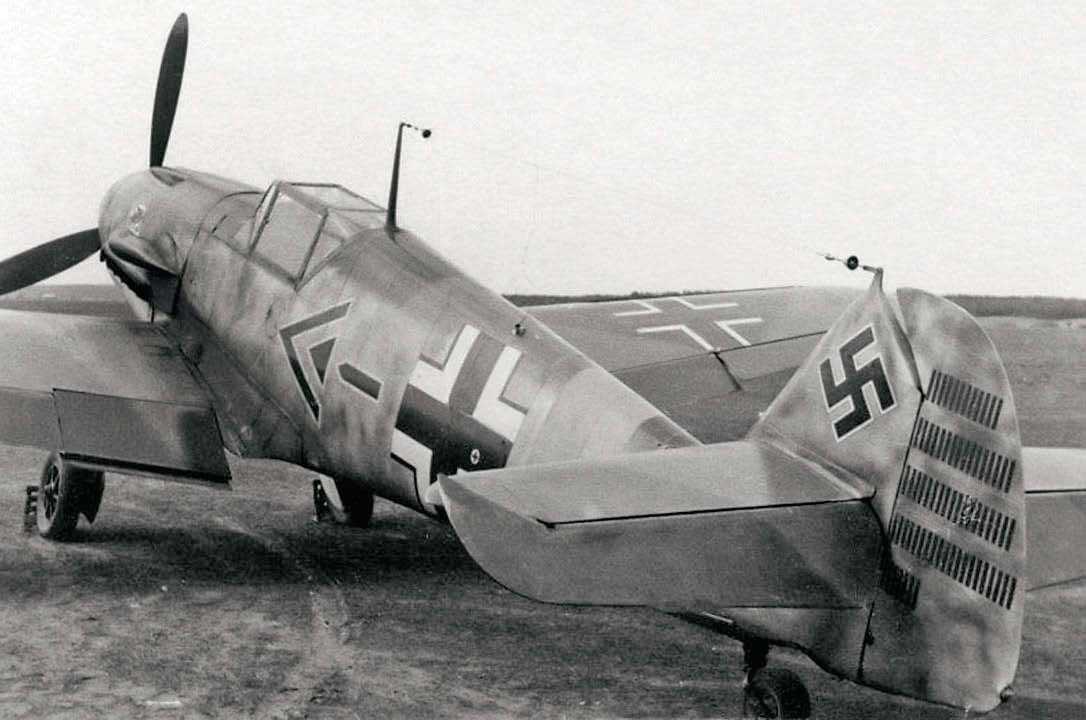
Finally, in the Junkers Ju 52, the Luftwaffe possessed a rugged workhorse, fully capable of transporting 1.800 kg (4,000 lbs.) of cargo, or 18 fully-equipped soldiers or ten 200-liter fuel drums to a distance up to 1,000km (620 miles) one way .
Transport aircraft allowed the concentration of force quickly or provided urgently needed provisions when supply by land was unsatisfactory. They also offered courier services transporting documents and commanders where needed.
Around 10% of the Luftwaffe aircraft were transport aircraft.
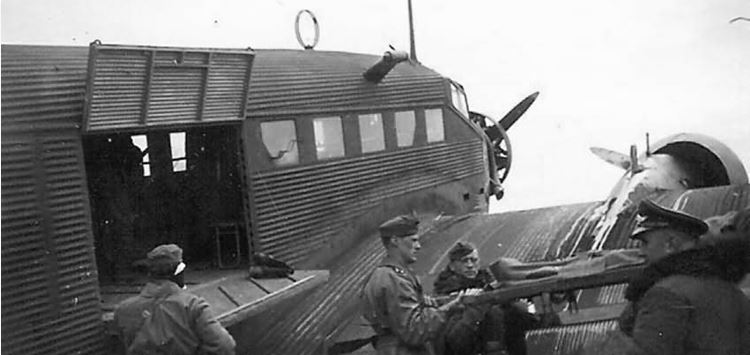
German air-crews were thoroughly trained, and the losses incurred so far including those in the Battle of Britain had not been severe enough to necessitate reducing training hours . The Germans continued instructing pilots with basically the same peace-time syllabus until September 1942 . After almost two years of fighting, most of the original pilots were gone, but the casualty rate was sufficiently low that the new pilots were gradually absorbed by the existing experienced squadrons without them losing its sharp edge . An example is the performance of a German fighter wing, JG26, in the period 1940-1942. During 1940 (Battle of France and Battle of Britain period) it achieved a 5:1 kill ratio, while during 1941 and 1942 (in the Western Front, well after the Battle of Britain) it got 6:1 and 5:1 respectively . This means that the effectiveness of the Luftwaffe fighter squadrons remained stable. In Russia, the German fighter units would perform even better. During the period June to December 1941 the Eastern Front Bf 109 Gruppen achieved a 13:1 kill ratio .
Bomber squadrons similarly enjoyed a high level of success (as attested by the bombing results in Greece and in the Mediterranean in April-May 1941).
The commonly cited assertion from many historians (themselves repeating a 1940 pronouncement by Winston Churchill) that the losses during the Battle of Britain triggered the decline of the German fighter and bomber wings is not consistent with the facts. On the contrary, the skills of the Luftwaffe pilots were nearing their zenith.
The ability of the German air fleets (Luftflotten) to exert formidable force on the enemy did not depend exclusively on the aircrews and their aircraft. To a large extent, this ability hinged on the attached Luftwaffe ground troops whose competences supplemented and enhanced those of the air troops, to the point that without them the air troops would have been reduced to almost impotence.
The Luftflotte organization meshed successfully both air and ground companies to arrive at an effective and resilient combined-team outfit. It consisted of four groupings: Fliegerkorps that contained all the Geschwader, Gruppen, and Staffeln encompassing all air assets (aircraft and aircrews). Flakkorps composed of motorized battalions of light anti-aircraft guns, mixed (light and heavy) anti-aircraft guns, light projectors, and barrage balloons. These battalions assumed responsibility to defend point targets, including airfields and important communication junctions. The importance of the flak battalions has been underrated by historians, but it must be noted that during World War 2, for each 10 aircraft shot down by Luftwaffe aircraft, flak guns knocked down another 7 . Also, fierce anti-aircraft fire degraded significantly the accuracy of the enemy attacks and prevented multiple passes over a target. The Flakabteilungen (battalions) also supported army troops continuously. Two or three comprised a regiment. A remarkable example is 104 Flakregiment attached initially to Army Group Center which from the start of the campaign to April 1942 (the Barbarossa period) participated in more than 500 engagements where it destroyed 253 aircraft, 106 tanks, 159 vehicles, one armored train, 2 command posts, 2 ammunition depots, 1 fuel depot, captured more than 2.900 prisoners, 63 aircraft, and 41 vehicles and destroyed or captured several hundred artillery guns, mortars and machine-gun nests .
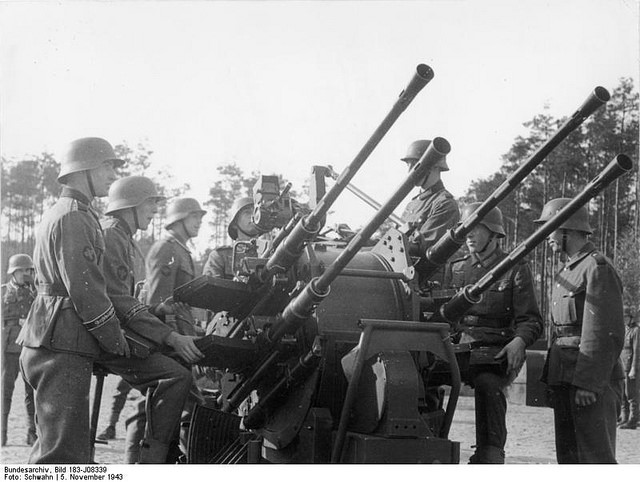
The third element was the Ground Organization, involving two commands: The Air Administrative Commands (AAC) with the responsibility to keep the airfields supplied with bombs, ammunition, fuel, lubricants, spare parts, food, and other equipment and to provide maintenance services to the aircraft. 75 to 80% of all aircraft were usually available for operations daily. The other command was the Air Administrative Command Staffs for Special Duty who established a new ground organization in captured territories quickly. Detachments of Luftwaffenbautruppen (Luftwaffe construction troops) were assigned to both commands. These troops carried out the construction of airstrips, revetments, billets, and other light building to provide full functionality to the required facilities. Besides, they also endeavored to protect targets by making it difficult for the enemy to identify them. To do so they constructed decoys and did camouflage work. In critical areas, like the Ploesti oilfields, SHD detachments installed and operated smoke generators.
The Luftnachrichtentruppen or signal troops completed the Luftflotte organization. These troops had two critical missions: the first was to establish solid communication networks between headquarters and troops to permit the flow of information and to disseminate orders using wireless or telephone sets. The second consisted of the vigilance of the controlled or contested airspace over which operations were conducted. This task was carried out by the Flugmeldedienst organization which was part of the signal troops.
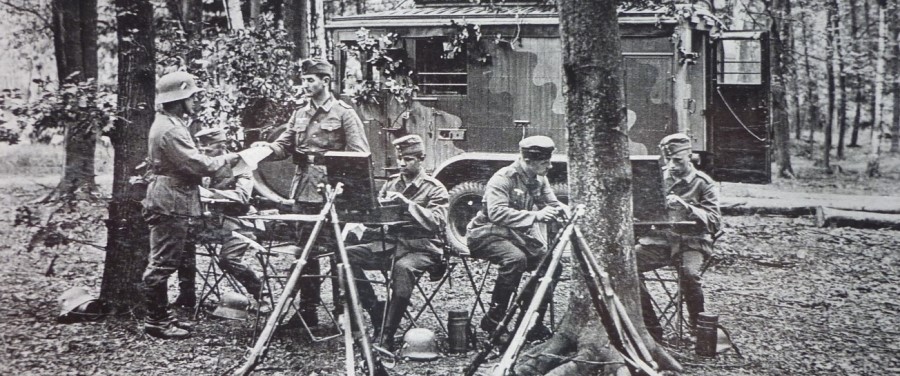
The vigilance of the disputed airspace was a complex process that strived for early detection of enemy incoming aircraft employing observation posts (supported by acoustic locators), radar networks and radio interception.
Radar networks used short- and long-range radar sets, radar intelligence (to understand the use of radar by the enemy) and radar jamming.
Radio interception consisted of monitoring enemy radio networks to identify enemy attacking airfields, number of enemies and attack direction. In general, the objective of the Flugmeldedienst consisted of identifying the number, type, nationality, bearing, and altitude of aircraft flying over German-controlled or contested airspace and alerting airfields, flak, ground troops, and passive defenses. Without the Flugmeldedienst it was not possible to concentrate powerful fighter forces at the threatened sectors.
By June 1941 the Germans had gained very valuable experience in these tasks and had a significant advantage over the Soviets.
The aerial doctrine of strong tactical support for the army as part of the Blitzkrieg explained elsewhere, ensured a strong focus in high-impact missions that had the best chance of attaining strategic results, that is, of defeating the enemy nation-state swiftly. The force structure of the Luftwaffe was designed with this in mind: 10% transport aircraft, 20% reconnaissance, 30% fighters, and 40% bombers. The tactics employed by observation, fighter and strike aircraft had been honed to excellence.
All these factors gave the Luftwaffe a significant edge in a battle against the Soviets, but the German military-industrial complex, that so far had delivered outstanding tools in bearable quantities exhibited perturbing fissures.
The incapacity to increase substantially the manufacture of aircraft and the training of pilots starting in 1940 must be mentioned first since this had a profound adverse impact on Barbarossa’s fortunes, more so since the German leadership decided to embark in a war against the USSR and Great Britain simultaneously.
Williamson Murray provides evidence that the Luftwaffe force structure did not increase at all in over a year. The number of available horizontal bombers at the outset of Barbarossa had decreased by 200 aircraft when compared with the force that attacked France 13 months earlier. This troublesome state of affairs resulted from the low productivity of the German aircraft industry which manufactured 8.295 aircraft in 1939 , 9.863 in 1940, and 11.544 in 1941 (a 39% increase in two years). By comparison, the Soviets manufactured 8.000, 10.385 and 15.735 respectively (97% increase in the same period).
More ominously, Great Britain increased its production from 7.940 (1939) to 15.049 (1940) to 20.094 (1941), a 153% increase . The United States manufactured 19.433 in 1941 .
Note that while in 1939 Germany built more aircraft than the USSR or Great Britain by 1941 its production output was far inferior to that attained by Great Britain and the USSR individually. And that was not all, the rate of increase of its enemies meant that matters would only get worse.
Although the quality of the Luftwaffe aircraft in 1941 compared favorably with that of its enemies, this advantage could not compensate for the unexceptional output. The reasons behind this problem can be traced back to the skill-set of the directors assigned to lead their respective aeronautical industries. Ernst Udet, an ex-fighter pilot with slight engineering and administrative training headed the Luftwaffe Air Armament Office . He proved able to select sound designs but found it impossible to manage the complex functions of manufacturing and the introduction of newer aircraft designs. In contrast, Andrei Shakhurin, a graduate of the Moscow Engineering-Economics Institute, led the People’s Commissariat for the Aircraft Industry (NKAP) and supervised a successful expansion of the industry .
Some in Germany had already detected the problem and informed Goering . Furthermore, the Germans had a person cut for the job, Field Marshal Erhard Milch, a highly talented and cold industrialist with extensive experience in the aeronautical industry . Milch had directed Lufthansa previously and the expansion of the Luftwaffe, but Goering became jealous of the success of his subordinate and removed the Air Armament Office from him, giving it to Udet.
The introduction of newer designs is the other half of the industrial problem. While the development of existing models was satisfactory, a new aircraft must be in the drawing board at the moment that its predecessor initiates operations. The only important new aircraft to see service in 1941 was the Focke Wulf Fw 190A. A great fighter indeed, but it was the only success among a list of major disappointments (like the Bf 210, He 177, and Hs 129) . This deficiency was irrelevant in 1941, the period of interest of this study, but it would create problems in 1942 and would trigger a crisis a year later.
During the critical period 1940-1941, the Luftwaffe lacked the leader to invigorate aeronautical production.
As vital as the engineering problem was, the low-technology obstacle of pilot training was at least as important. A factory assembles a brand-new aircraft in a matter of weeks, but a pilot requires more than a year of instruction. The new pilot is not immediately effective, it takes at least another 4 to 6 months of combat operations to produce dependable results .
This means that a large pool of pilots must be prepared with sufficient time. The earlier the better. The losses in Russia and other fronts prompted a widespread deficiency of pilots in the operational squadrons by the end of the year . Great Britain vastly expanded its training program forcing additional stress to the Luftwaffe organization. In 1941 the Germans manufactured only 1.725 trainers , virtually the same as in 1940, while the British built 6.934 .
The responsibility of this serious mistake lies on the shoulders of Generaloberst Hans Jeschonnek, the Luftwaffe Chief of Staff, who identified the problem too late and failed to vigorously correct this threat .